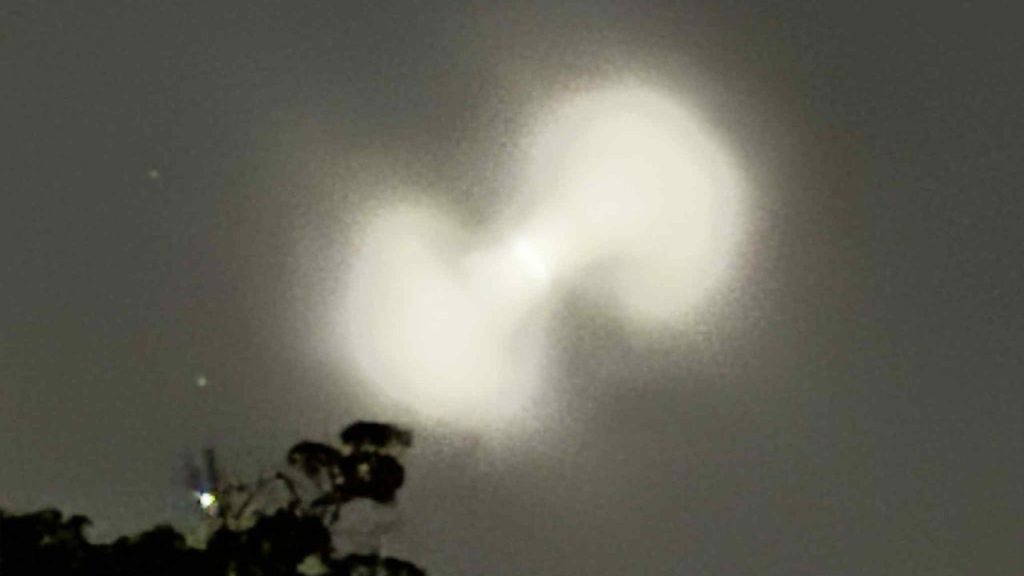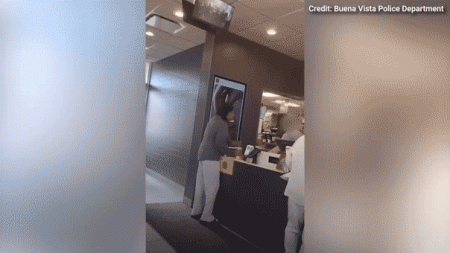The Curious Case of a New York UFO: How a Rocket Launch Sparked Extraterrestrial Speculation
It was a scene straight out of a classic science fiction movie—a mysterious, pill-shaped object glowing against the darkening sky over upstate New York’s Finger Lakes region. On August 12, residents captured photographs of what appeared to be a slow-moving luminous orb wrapped in an ethereal mist, hovering seemingly without explanation. The images quickly found their way to a community Facebook group, where speculation ran rampant among locals who witnessed the phenomenon. “They’re here,” joked one commenter, while others described the sight as “truly an amazing thing to witness” and “otherworldly.” The encounter sparked immediate fascination and triggered the age-old human response to unexplained aerial phenomena—a mixture of wonder, excitement, and for some, a touch of fear that perhaps we were not alone after all.
What many believed could be evidence of extraterrestrial visitation, however, turned out to have a much more earthbound explanation. Space.com later confirmed that the mysterious orb was actually the planned launch of the Vulcan Centaur rocket by the United Launch Alliance from Cape Canaveral, Florida. The rocket’s exhaust plume, illuminated by the setting sun at high altitude, created the otherworldly glow that captivated onlookers hundreds of miles away. This revelation transformed what seemed like a potential close encounter into a reminder of how advanced human technology, when viewed from certain angles and lighting conditions, can appear utterly alien to the untrained eye. The Pentagon, when approached for comment on the sighting, did not respond to requests—perhaps unsurprising given the ultimately conventional explanation for the event.
Rear Admiral (ret.) Tim Gallaudet, Ph.D., of the U.S. Navy, offered insights into how professionals approach such sightings, telling Fox News Digital: “My first instinct from my scientific and military training is to look for a conventional explanation, such as a meteorological or human-made aerospace explanation, because that’s what many objects in the sky are.” This methodical approach highlights the gap between public perception and expert analysis when it comes to unidentified aerial phenomena. Gallaudet’s comment underscores a crucial reality—that while the public may immediately jump to extraterrestrial explanations, those with scientific and military backgrounds typically work through a series of more mundane possibilities first. In this particular case, the object turned out to be exactly what such analysis would predict: a human-created aerospace phenomenon.
The incident illustrates the sophisticated protocols that experts employ when evaluating potential Unidentified Anomalous Phenomena (UAP). Gallaudet explained these procedures in detail: “The primary protocols are to cross-check the visual sighting with other data: higher-resolution optical or infrared, radar, lidar, listen for a radio or acoustic signature, and if it looks to be under intelligent control, interrogate it via VHF radio.” This multi-sensor approach allows for comprehensive characterization of objects, determining critical factors like “size, speed, altitude, range, material composition, and intentions.” Such rigorous methodology stands in stark contrast to the immediate speculation that often occurs on social media, where a single photograph or video can trigger extensive conjecture without the benefit of corroborating data. The Finger Lakes sighting demonstrates how easily natural or man-made phenomena can be misinterpreted without this kind of thorough analysis.
The event comes at a time when UAP sightings are reportedly increasing across the United States, with over 60 unexplained sightings documented in just the first half of 2025 according to national tracking groups. This uptick reflects a growing public interest in unidentified aerial phenomena, fueled in part by recent government acknowledgments of unexplained encounters and the declassification of military footage showing objects with apparently extraordinary capabilities. Against this backdrop, the New York incident serves as an important reminder that even as legitimate questions about unexplained phenomena deserve serious investigation, many sightings have conventional explanations that become apparent with proper analysis. This balance between openness to genuine mysteries and scientific skepticism represents the most productive approach to understanding unusual aerial encounters.
Gallaudet offered a thoughtful perspective on why continued scientific research into UAP is important, regardless of whether individual cases turn out to have conventional explanations. “We tend to fear the unknown,” he noted, “and so more UAP research can not only reduce the stigma associated with the phenomena, but also transform their enigma status to accepted science.” This statement captures a fundamental truth about human psychology—that mystery breeds both fascination and apprehension, while understanding cultivates comfort. The Finger Lakes incident, with its journey from “alien visitation” to “rocket launch,” perfectly illustrates this transformation from the unknown to the known. As more research is conducted and more data collected on aerial phenomena, the boundary between the truly unexplainable and the merely misunderstood continues to shift, offering both reassurance to those who seek conventional explanations and methodical investigation for phenomena that remain genuinely anomalous after thorough scientific scrutiny.











